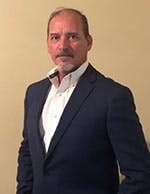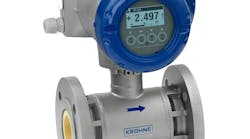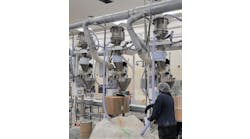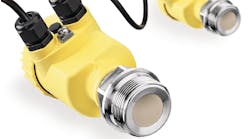Structured Workflows Turn Data Into Action Items
Floyd has been working in the asset integrity management industry for his entire career of over 40 years, with half of that time spent on the owner user side and the other half on services and technology.
Throughout his career, Floyd has worked in a variety of positions from chief inspector to executive levels as a strategist and technology driver for end users of asset integrity and risk-based inspection platforms. He specializes in digitalization technologies for inspection, mechanical engineering and material science. Floyd is passionate about spreading awareness of the value of these technologies in a way that is easily digestible for operators to incorporate and understand, which is fortuitous because digitalization is a daunting task and often turns into static without the right context.
Transcript:
Traci: Thanks for joining me today, Floyd.
Floyd: Very happy to be here, Traci. Thank you for inviting me.
Traci: I want to get into it right away here and just start talking a little bit about how manufacturers are dealing with unstructured data to create valuable metrics and to ensure that they're achieving their digital transformation journey.
Floyd: So the key word there is digital transformation, journey is the key word. They've started many, many years ago and if you think about it back when I was younger, it was just a bunch of paper documentation in file cabinets all over a plant. It might be in the maintenance department, it might be in the operations control room. It might be an engineering department. Anywhere, you could find information anywhere, but you had to really go around and look for it. So through this digital transformation journey, most companies, most plants, have already digitized documentation.
And that helps a lot. That really creates the ease of access when one wants to go back and look at documentation that they've generated from time before, years before. But it doesn't help the whole plant because then when you think about that file folder that it's in, that electronic file folder, that shared folder it's on, really only that person has access to it, or maybe people in their group have access to it if it's a shared folder. But what if I'm in the inspection department and I need access to some maintenance information and I don't have access to that information. Then it of course creates a data silo.
vice president of Antea, a global software and services company specializing in asset integrity management software with digital twin.
And that's what we try to do is break down data silos here. And in this digital transformation journey, tear down the data silos in the beginning, and then start structuring the way you collect that data. You see, you can have a maintenance technician document what he's working on in one fashion, and another one document in another fashion. So if you try to correlate that data, you have to physically read it and then physically read the other one and try to correlate that data. Whereas if you just had structured workflows, so that everybody's collecting the same information in the same fashion, whether it's a dropdown box, whether it's dropdown tick boxes or other means of structuring that data, so that you can actually trend it and turn it into something actionable later on. And you do that across the gamut.
When it comes to asset integrity, you got one inspector working for one company and his report looks like this. And then of course another inspector, his report looks entirely different. So you get two good reports there, but you just can't make that data trend because they're written in two entirely different formats. And the information they've documented is very different because they all contextualize different information in different ways. So really it's a matter of structuring how the data's collected. That way it's actually usable in terms of machine learning or artificial intelligence and just the way humans consume data through visualizations. That's just kind of my feedback there.
Traci: Well, let me ask you this. So we're talking about data, it seems like data going forward. What about the data that you talked about, the stuff that was in those filing cabinets? How can you put that into the format you're talking about that is consistent all the way through?
Floyd: Yeah, certainly. You're trying to undo the years of how we've done it before in the past and make that historical information useful. And you're spot on there. I mean, that's really what it takes is a matter of shifting that data into something that's structured. And that means taking previous information, previous reports, and bringing them into an electronic platform and being able to use that information in that structured way. But they can't remain the paper in the files. They can't remain documentation in shared folders or in individuals folders. They have to come together in one single database. And of course you've heard the term single version of the truth. That's exactly what we're trying to create here in this whole digital journey is a space where all information, all data, can be accessed so that you can create actions from it.
Traci: Now maintenance costs and asset life cycle costs are always top of mind. How can the industry take advantage of asset integrity management and these IIoT solutions to address the challenges that they face, the limited resources, while they still focus on the bottom line? There's so many moving parts here.
Floyd: You're exactly right. There are a lot of moving parts and you got to kind of put those in boxes and put each one of those boxes in perspective. So bottom line is what we're trying to improve. And one of the ways we do that, of course, is by, one, keeping things from coming from together, some kind of a catastrophic event. Because then you're creating what the financial implication of whatever damage is done, you're creating the environmental impact. You're creating the safety implications for the people on the plant and surrounding communities. You're also creating a PR, a public relations situation, where you might have channel 13 news hovering over your plant. You don't want any of these things and they all cost you money. So mitigating the risk is first and foremost. And this is where the asset integrity management platform comes in. Now to really go after that bottom line and try to improve it in a much higher magnitude is the IIoT aspect.
So currently we have people that go out in the field physically, and they're taking all kinds of readings, whether it's an ultrasonic fitness reading or vibration monitoring reading, they're taking all these different kinds of readings and even observations and documenting them. One way to reduce that cost is by reducing the resource requirement. Connecting this asset integrity management platform, you can actually speak to SCADA data. You can speak to DCS data. You can speak to data historians and remote sensors. And all this data can come in real time. So you've done a couple things there. One, you've also helped reduce the safety risk even more because now you've got less resource requirement out in those hazardous environments.
You're collecting that data from a remote means, that's data historian, remote sensors and so on. Now you've reduced the risk of that employee. You've also improved the efficiency because now that employee didn't have to spend the time to go out there and then come back and document what they found in some structured fashion. Now they're just actually collecting that data real time and analyzing it real time, almost real time. Think of it that way. Now you've just minimized the safety and the risk in the facility by having these humans in hazardous workplaces. You haven't really changed their work, you've changed how they do it. So it's not a matter of reducing or somebody not having a job. They have a job. They just now are in a more analytical mode versus being out there in the field and in that hazardous environment.
Traci: Now what about some security issues there? Are there any security issues? You've got all this information out there. There could be nefarious folks out there wanting to do harm.
Floyd: Sure. Most of the data we contain in a system, it is really about the assets and about their life cycle. So we don't feel like it's at a high risk. However, given what we've seen in industry lately over the past year or two years, it's just better to be safe. And so we take all sorts of safety risk in terms of firewalls and of course servers. We can do suppliers cloud, but in most cases, it's on the end users cloud, it's on their servers. And so their safety also applies. So when you have our safety and theirs stacked on top of each other, it's pretty safe out there.
Traci: Sort of a double whammy there.
Floyd: Yes, definitely. Also, you get certifications you can look at. These are things that we're doing now, or the company I work for, Antea, is doing now is we're working on getting ISO certified for cyber security. And we want to do that, one, to protect ourselves, but mostly to ensure our customers data is safe. So there are added values that one can do, things that people can do just to ensure that cyber security and we're taking those steps.
Traci: And it's almost an additional value add to what we're talking about here to have that cyber security security. Not to be redundant there, but to have that in place. So that's good.
Floyd: It is really, if you think about some of the man, can you believe it, cyber hackers and holding data ransom? Man, who would've thought? But it happens. So there again, those companies that have seen that, that have experienced that, had to come out of pocket and pay to get their data back. And that's just sick thinking, but by the same token, these are things that we do not want to happen.
Traci: Absolutely. Now you talked a little bit about the remote aspect of collecting this data, but also remote workers. That's the new normal now. What is the best way to leverage this type of technology to empower this workforce?
Floyd: There's been a lot of traction around mobility in the past years. Everybody's got a smartphone just about, and there's so many apps. You've always heard, there's an app for that. Well, there is an app for that, just about in everything. So that's one thing. So that's the first layer of mobility. Let me back up. I want to explain to you, I see mobility in four dimensions and probably five, and we'll talk about that one last. But the first dimension is what we already see, people with smartphones and tablets out here doing things. They're using an app to collect data of some sort, they're accessing information from their smartphones, like a cloud based aim platform, like Antea's. They can do everything from a smartphone or a tablet, just about, that they can do from their desktop. And that's the first layer of mobility is being able to access that information.
The second dimension is where they can influence that data. This is where the apps let you document something. You're taking readings or you're using drop boxes and tick boxes to document what you're finding in a structured fashion. And you're able to do this from anywhere. It's a cloud based arrangement. So the third layer is where connected worker concepts come in and you're not just using smartphones and tablets, you're actually using wearables. So now one can be hands free and communicating through a wearable device to document their findings and their actions and everything, yet having their hands free and being able to do their job. So maintaining situational awareness, maintaining any safety situations around you and still documenting what you're finding. And so that's the third dimension of mobility, the way I see it. And then the fourth dimension is where you can do that, but you can also collaborate and bring other people in.
One of the things we've noticed since the COVID came about was, well, let me start before COVID, was the great resignation is where we're at now. And everybody's just changing careers. After the lockdown, people learned how to generate income in so many different ways that a lot of them just completely changed their career. A lot of them moved into data science, data analytics, who knows? But I mean, it's really hard to find a workforce these days. So you've got limited resources with tribal knowledge and you've got a whole new oncoming workforce that needs to be trained. And so if you look at this fourth dimension of mobility, it's actually the solution, the answer to that. It's where one can be on a project and not have all the skills they need just yet, but they're in the training process and they can have a subject matter expert collaborating with them and seeing exactly what they're seeing while they're performing these activities.
You can have an inspector out here performing a phased array on a pipe that's just been welded for weld quality. And then you can have a really high-end level three phase array tech sitting in Houston, Texas looking, overseeing what he's doing.
Providing guidance and providing interpretations and helping this less experienced guy. Not only helping him learn, but also helping to help them get the job done. And using a platform like this, you can collaborate with even the end user.
If you're seeing problems, maybe you want to invite a third party or a fourth party and get some feedback from everybody. But here's the cool part, that fifth dimension that I mentioned, is being able to invite the device. So now even the subject matter expert sitting in Houston, Texas talking to a guy who knows where, maybe he's in Utah. And he can not only see what the guy's seeing, but he can see what the device is saying. He can make those interpretations from right there in Houston, Texas.
So it's collaboration, one to one, one to many or many to many and many to device. So this is what the future looks like when it comes to, well, and actually the future is now when it comes to connected worker concepts and the four or now fifth dimension of mobility.
Traci: Well tapping into that workforce, the workforce that wants to maybe semi-retired and just not have to deal with the day to day, but still be useful and still give their tribal knowledge to the younger workforce, that seems like a match made in heaven.
Floyd: It's paramount. And when you consider the training requirements for most of the inspectors and technicians, they require a certain number of hours. And I mean, a lot of hours, like 700, 2000 based on what it is, they require a lot of hours of oversight by a seasoned technician. So this is a means where even the service companies can leverage by having that subject matter expert sitting in their corporate office or wherever, or at home even, and being able to oversee three, four, five technicians. And still be looking over, not physically, but internet wise, web wise, be looking over their shoulder, watching what they're doing, providing the guidance, helping them with their interpretations and so on. And that means they're still getting their hours and those hours do count for oversight. And that means they're still working toward that certification, and they could be alone doing it. Technically they could be alone, physically they could be alone. From a cyber standpoint, they've got all the help they need. They've got a subject matter expert right there with them.
Traci: That's always comforting, isn't it?
Floyd: It is. It sure is. And most important part, I mean, is getting this new workforce up to a level of expertise of the exiting workforce. And to me, if you've got less of them, as you mentioned, semi-retired and all that. And so now we've got less of that experience and tribal knowledge. So now you can use one of those people to cover many of the technicians in their up-and-coming phases of their career.
Traci: Now let's kind of switch it a little bit and talk a little bit about digital twin technology. How can this technology provide insights and help drive intelligent decision making?
Floyd: So if we roll back to the IIoT conversation a moment ago, this is really where the edge comes in. Our aim platform is the bridge between IT, information technology, which we've known for years and then OT, edge technology, which is newer in the past decade. And this aim platform sit right in the middle. So it speaks to the IT side, which is the ERPs, the enterprise resource planning platforms and computer maintenance management platforms. You integrate to those guys so you're able to communicate times when say there has to be a work order generated for an inspection to be performed, or maybe there needs to be some repairs made as a result of an inspection. So when you integrate these two, this IT and this aim platform, you actually create the ability to autonomously generate the notifications for that to happen.
And then when those planners convert those to work orders and work actually takes place, then you actually document when that work is completed and that information comes back to the platform. So one can go out and verify that it was done and done correctly, and then schedule it for its next interval inspection or maintenance activity or whatever the case may be. So that's the IT side. This is the way you keep the single version of the truth from the information technology side into the life cycle management tools. Now the OT side is where the digital twin comes in. Because now we actually connect to these other data sources that I mentioned earlier, SCADA, data historian, remote sensors, DCS. We can connect into those platforms that actually have the sensor data, live sensor data, and utilize that data to help us glean more actionable information and understand not only what history looks like up to date, but what it looks like now. This creates a platform for AI and machine learning as well, also.
So you got to keep that in mind. Now when the digital twin comes into play, this is where we take all the visualizations and be able to pull all that data into one visualization for contextualization. I read an article, it's been a couple years ago, I think really it was during the lockdown. I think it was Microsoft, or maybe it was Google that wrote it. But they talked about the humans with the onset of smartphones and internet connectivity, 4g 5g, wifi, and humans have developed the attention span of a goldfish. And I thought that was crazy. Yeah, that's really true, I read it. And that's eight seconds. And they say it's due to things like social media and gaming, where it really takes some exciting things to get their attention as they scroll through their smartphone. And I guess I kind of agree with that. Because me, I'm a real visual kind of person.
I would rather look at a visualization, a graphic of some sort and be able to glean the data through that graphic. And that helps me contextualize that information better. And surely the younger workforce it does. So being able to visualize and contextualize that data through a digital twin, that real time data, and be able to compare it to the historical data, this to me makes for much more efficient decision making, and much more accurate too. You're not guessing at what's actually happening in the plant. You're not trying to guess at what happened last night in the middle of the night while everyone is asleep. All the information is readily available right there in front of you. This is to me where digital twins come in the most handy.
Traci Purdum : I have a ringer question here for you. This is my one last question for you today. In your bio, it mentions your personal interests, which include team roping, competitive horses and cattle. Let's hear about that.
Floyd: So I team rope, it's kind of a hobby, but it's kind of also, I guess, semipro. I team rope with United States Team Roping Championships and World Series Team Roping, and a couple other organizations. And I do that just about every weekend. We practice a couple of nights a week and we go to these events and we try to win stuff. It's a lot of fun. It's a whole lot of fun. In team roping, you got a header and a heeler and of course two horses and a cow. And so there's a lot of variables in play out there in the arena. And everything's moving at mach speeds. In team roping, you got a header and a heeler. I'm the heeler. So I rope the back feet, or at least I hope I do. That's the plan.
Traci: Well, I guess you can tie that into your day job, but just on a different level. You're trying to get all of these pieces, parts talking to each other, to make sure that you get to the end result.
Floyd: Yeah, spatial awareness. You got to pay attention to everything going on around you at the same time and make things happen while all that mass is in motion.
Traci: Well, Floyd, thank you for your thoughtful answers into this topic. I appreciate the time that you put into this, and our audience I'm sure will as well.
Floyd: Well Traci, I'm so happy you invited me. It was really good talking with you. I'll look forward to talking again sometimes soon.




